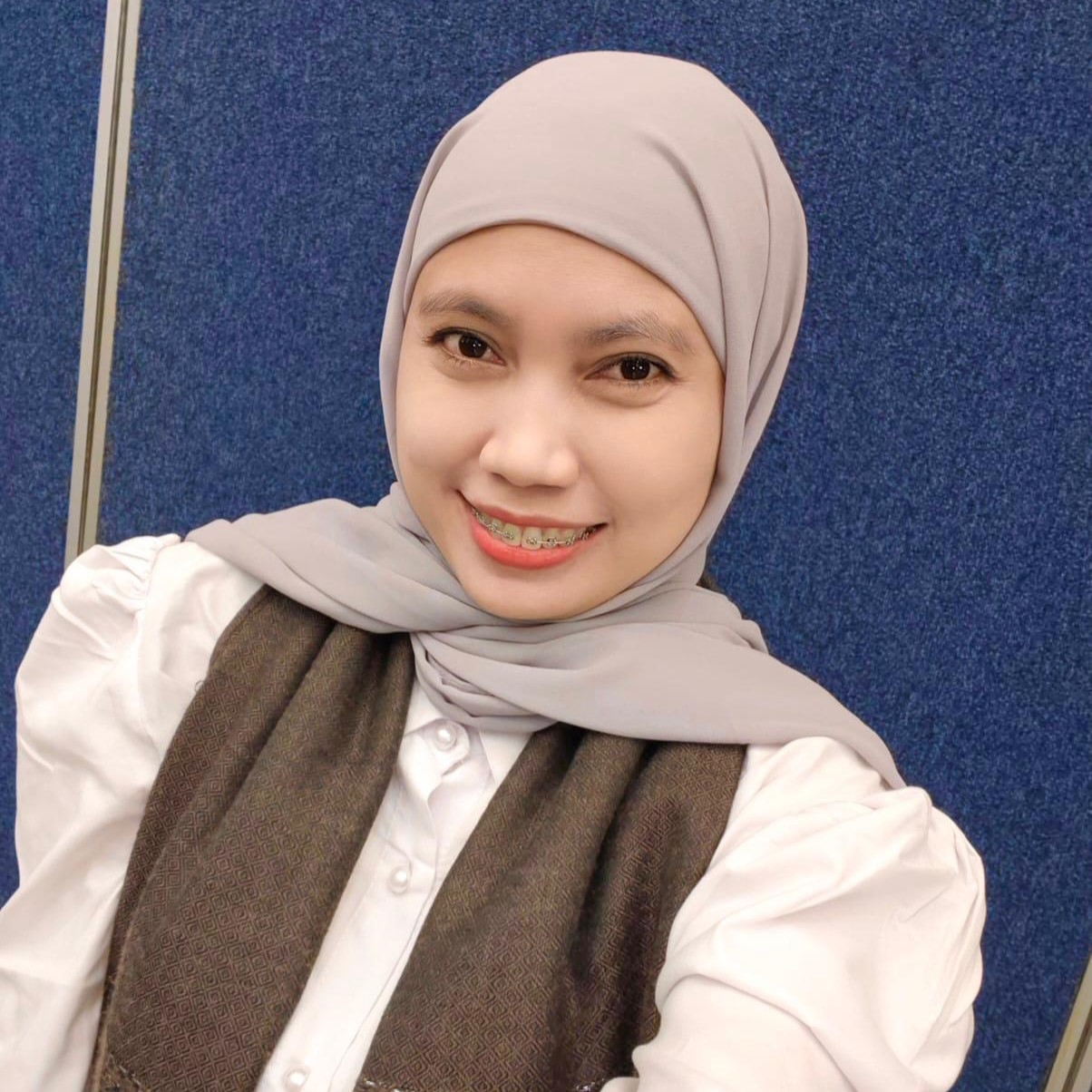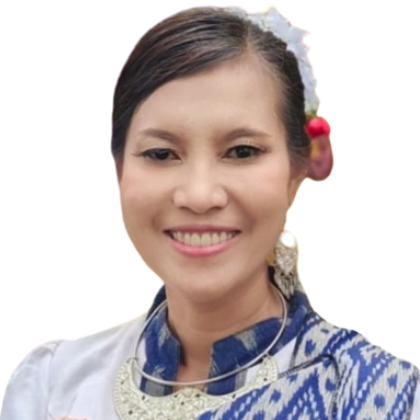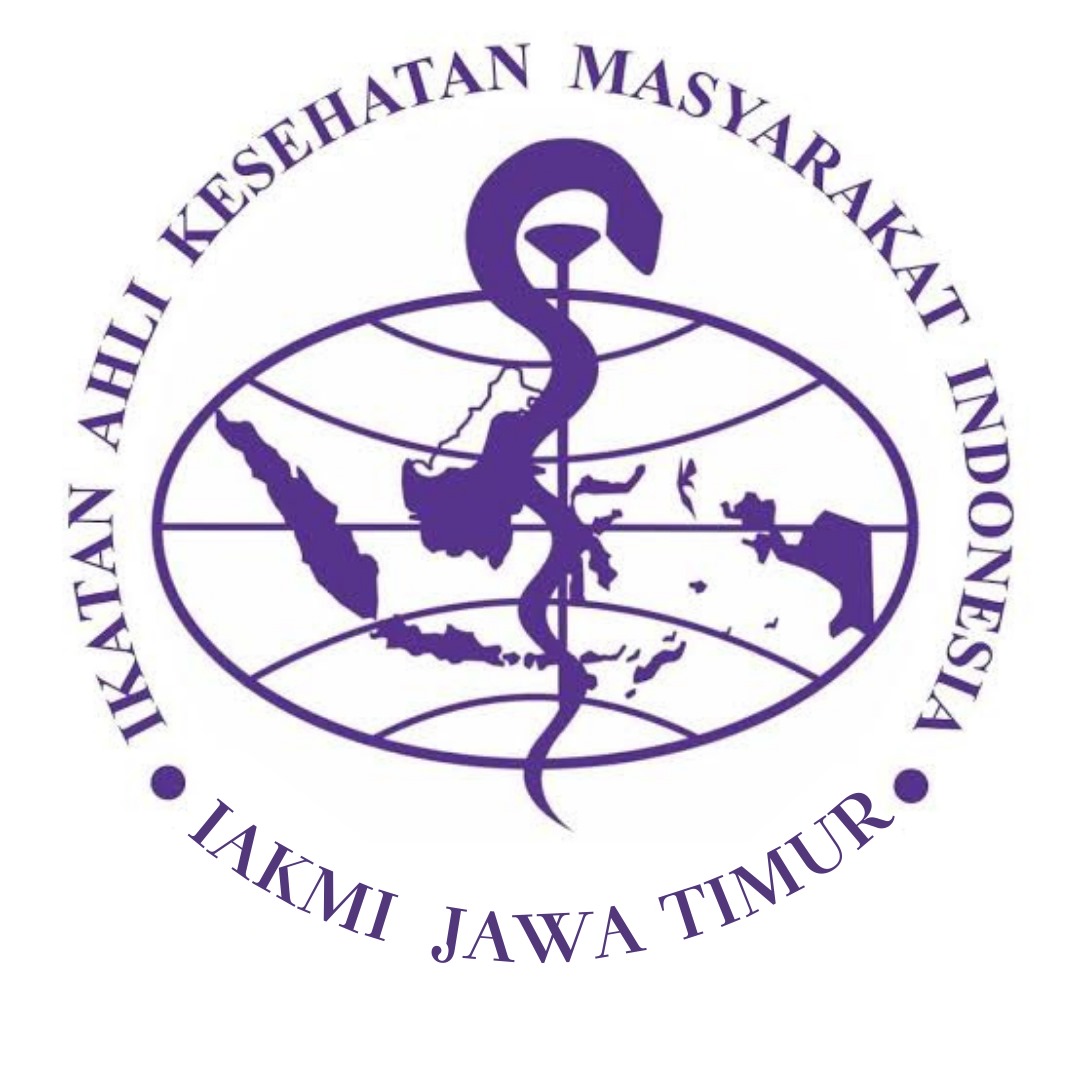The Correlation between Maternal Nutrition, Toddler Feeding Patterns, and Household Economic Status on Stunted: A Case Study in Kelurahan Arjowinangun and Mergosono, Malang City

Downloads
Background: Indonesia has a higher potential to experience an increase in stunting cases, because around 31% of children under the age of five experience stunting. The prevalence can be influenced by direct and indirect factors, from pregnancy to early childhood growth. The increasing number of stunting cases affects the quality of human resources, resulting in various significant impacts, such as declining public health, economic stagnation, poverty, and social inequality.
Objectives: This study aimed to examine the correlation between maternal nutrition, toddler feeding patterns, and household economic status with stunted cases in Kelurahan (Urban Village of) Arjowinangun and Kelurahan Mergosono, Malang City.
Methods: This study employed a quantitative approach, utilizing a retrospective cross-sectional design with correlation analysis methods. As many as 60 respondents (mothers and stunted toddlers) participated in the study. Statistical analysis includes Spearman’s Rank test for bivariate analysis with a 95% significance level (p=0.05) and multiple logistic regression for multivariate analysis.
Results: Bivariate analysis revealed significant positive correlations between maternal nutrition (p=0.000), toddler feeding patterns (p=0.000), and household economic status (p=0.000) with stunted cases. Among these variables, household economic status demonstrated the strongest correlation, with a correlation coefficient of 0.617. Multivariate analysis showed that the household economic status variable had a greater chance of correlating with stunted cases by 30.989 times.
Conclusion: All three independent variables were significantly correlated with stunted, with household economic status being the strongest determinant.
Adebisi, Y.A. et al. (2019) ‘Prevalence and Socio-economic Impacts of Malnutrition Among Children in Uganda’, Nutrition and Metabolic Insights, 12. https://doi.org/10.1177/1178638819887398.
Aida, A.N. (2019) ‘Pengaruh Kondisi Sosial Ekonomi Terhadap Stunting Di Indonesia’, Jurnal Budget, 15(2), pp. i–ii. https://doi.org/10.52829/jantra.v15i2.136.
Aini, N. et al. (2022) ‘Hubungan Rendahnya Tingkat Ekonomi Terhadap Risiko Terjadinya Stunting : a Systematic Review’, Jurnal Kesehatan Tambusai, 3(2), pp. 127–135. https://doi.org/10.31004/jkt.v3i2.4457.
Akhmadi, W.I.A.S. (2016) Penetapan Kriteria dan Variabel Pendataan Penduduk Miskin yang Komprehensif dalam Rangka Perlindungan Penduduk Miskin di Kabupaten/Kota, The SMERRU Reseach Institute. https://doi.org/10.1109/CAIDCD.2009.5374873.
Amalia, I.D., Lubis, D.P.U. and Khoeriyah, S.M. (2021) ‘Hubungan Pengetahuan Ibu Tentang Gizi Dengan Kejadian Stunting Pada Balita’, Jurnal Kesehatan Samodra Ilmu, 12(2), pp. 146–154. https://doi.org/10.55426/jksi.v12i2.153
Amra, R.N., Rambe, R.S. and Bancin, F. (2024) ‘The Relationship Between Nutritional Status And Economic Status And The Incidence Of Stunting In Toddlers In The Work Area UPTD Simpang Kiri Health Center Simpang Kiri District Subulussalam City In 2024’, MiHHICo Mitra Husada Health International Conference, pp. 197–201.
Anitya, P.C., Senjaya, A.A. and Somoyani, N.K. (2022) ‘Hubungan Status Gizi Ibu Saat Hamil dengan Kejadian Stunting di Wilayah Kerja Unit Pelaksana Teknis Puskesmas Kintamani VI Tahun 2022’, Jurnal Ilmiah Kebidanan, 11(1). Available at: http://repository.poltekkes-denpasar.ac.id/9785/.
Ardha, M.A. Al, Silamat, E. and Saputra, A.S. (2023) ‘Hubungan Sosial Ekonomi dengan Kejadian Stunting di Wilayah Puskesmas Cipadung Kota Bandung’, Jurnal Kesehatan Mahardika, 10(1), pp. 35–39. https://doi.org/10.54867/jkm.v10i1.155.
Aryastami, N.K. et al. (2017) ‘Low birth weight was the most dominant predictor associated with stunting among children aged 12-23 months in Indonesia’, BMC Nutrition, 3(1), pp. 1–6. https://doi.org/10.1186/s40795-017-0130-x.
Asian Development Bank (2024) ‘2024 Basic Statistics’, Practical MATLAB, pp. 121–131. https://doi.org/10.1007/978-1-4842-5281-9_6.
Badan Pusat Statistik Survei Sosial Ekonomi Nasional (SUSENAS) (2023) Data Sensus Indonesia | English Persentase Penduduk Miskin di Kota Malang, Jawa Timur, dan Indonesia (Persen (%)), 2021-2023. Available at: https://malangkota.bps.go.id/indicator/23/428/1/persentase-penduduk-miskin-di-kota-malang-jawa-timur-dan-indonesia.html.
BPS, B.P.S. (2023) Persentase Penduduk Miskin September 2022 naik menjadi 9,57 %. Available at: https://www.bps.go.id/id/pressrelease/2023/01/16/2015/persentase-penduduk-miskin-september-2022-naik-menjadi-9-57-persen.html.
Chakole, S. et al. (2022) ‘Unwanted Teenage Pregnancy and Its Complications: A Narrative Review’, Cureus, 14(12), pp. 18–22. https://doi.org/10.7759/cureus.32662.
Correa-De-Araujo, R. and Yoon, S.S. (2021) ‘Clinical Outcomes in High-Risk Pregnancies Due to Advanced Maternal Age’, Journal of Women’s Health, 30(2), pp. 160–167. https://doi.org/10.1089/jwh.2020.8860
Dahlan, M.S. (2016) ‘Besar sampel dalam penelitian kedokteran dan kesehatan’, Jakarta: epidemiologi Indonesia, 14.
Darojat, B.Z. et al. (2023) ‘The Correlation between Knowledge, Attitude, and Behavior of Responsive Feeding on Stunting Incidents in Children in Karangploso Health Center, Malang Regency, Indonesia’, E3S Web of Conferences, 448, pp. 1–10. https://doi.org/10.1051/e3sconf/202344801017.
Dinas Kesehatan Kota Malang (2022) ‘Profil Kesehatan Kota Malang Tahun 2022’, Dinas Kesehatan Kota Malang, (45), pp. 1–226.
Dinas Pemuda dan Olahraga Kabupaten Sleman (2018) ‘Undang-Undang Republik Indonesia Nomor 20 Tahun 2003 tentang Sistem Pendidikan Nasional’, Zitteliana, 19(8), pp. 159–170.
Direktorat Gizi dan Kesehatan Ibu dan Anak, K.K.R.I. (2017) Hasil Pemantauan Status Gizi (PSG) Tahun 2017, Buku saku pemantauan status gizi tahun 2017.
Duncan, G.J. et al. (2018) ‘Maternal Age and Child Development’, Demography, 55(6), pp. 2229–2255. https://doi.org/10.1007/s13524-018-0730-3.
Fitriani, H., Achmad Setya, R. and Nurdiana, P. (2020) ‘Risk Factors of Maternal Nutrition Status During Pregnancy to Stunting in Toddlers Aged 12-59 Months’, Jurnal Keperawatan Padjadjaran, 8(2), pp. 174–182. https://doi.org/10.24198/jkp.v8i2.1305.
GNP (2018) Global Nutrition Report, Global Nutrition Report. Available at: http://www.segeplan.gob.gt/2.0/index.php?option=com_content&view=article&id=472&Itemid=472.
Goudet, S.M. et al. (2019) ‘Nutritional interventions for preventing stunting in children (birth to 59 months) living in urban slums in low‐ and middle‐income countries (LMIC)’, Cochrane Library [Preprint]. Available at: https://www.cochranelibrary.com/cdsr/doi/10.1002/14651858.CD011695.pub2/full.
Hidayah, A., Siswanto, Y. and Pertiwi, K.D. (2021) ‘Riwayat Pemberian MP-ASI dan Sosial Ekonomi dengan Kejadian Stunting pada Balita’, Jurnal Penelitian dan Pengembangan Kesehatan Masyarakat Indonesia, 2(1), pp. 76–83. https://doi.org/10.15294/jppkmi.v2i1.47526.
Indonesia, M.K.R. (2022) Keputusan Menteri Kesehatan Republik Indonesia Nomor HK.01.07/Menkes/51/2022 Tentang Standar Alat Antropometri dan Alat Deteksi Dini Perkembangan Anak, Keputusan Menteri Kesehatan Republik Indonesia. Available at: http://link.springer.com/10.1007/s00232-014-9701-9%0Ahttp://link.springer.com/10.1007/s00232-014-9700-x%0Ahttp://dx.doi.org/10.1016/j.jmr.2008.11.017%0Ahttp://linkinghub.elsevier.com/retrieve/pii/S1090780708003674%0Ahttp://www.ncbi.nlm.nih.gov/pubmed/1191.
Iswardy, D. (2018) ‘Praktik Pemberian Makanan Bayi dan Anak (PMBA)’, Kementerian Kesehatan RI, pp. 1–40. Available at: http://www.kesmas.kemkes.go.id/assets/upload/dir_60248a365b4ce1e/files/1PAPARAN-STUNTING-DIR.GIZI_1222.pdf.
Jolliffe, D. and Tetteh-Baah, S.K. (2024) ‘Identifying the poor – Accounting for household economies of scale in global poverty estimates’, World Development, 179, p. 106593. https://doi.org/https://doi.org/10.1016/j.worlddev.2024.106593.
Kementerian Kesehatan, R.I. (2022) ‘Cegah Stunting Itu Penting!’, Warta KESMAS. https://doi.org/10.54339/jurdikmas.v4i2.417.
Kementerian Kesehatan Republik Indonesia (2022) ‘Buku Saku Hasil Studi Status Gizi Indonesia (SSGI) Tahun 2022’, Kemenkes RI, pp. 1–14. Available at: https://www.litbang.kemkes.go.id/buku-saku-hasil-studi-status-gizi-indonesia-ssgi-tahun-2021/.
Kementerian Kesehatan Republik Indonesia (2023) ‘Laporan Tematik Survei Kesehatan Indonesia’, Kementerian Kesehatan Republik Indonesia, 6(1), pp. 51–66. Available at: http://repositorio.unan.edu.ni/2986/1/5624.pdf%0Ahttp://fiskal.kemenkeu.go.id/ejournal%0Ahttp://dx.doi.org/10.1016/j.cirp.2016.06.001%0Ahttp://dx.doi.org/10.1016/j.powtec.2016.12.055%0Ahttps://doi.org/10.1016/j.ijfatigue.2019.02.006%0Ahttps://doi.org/10.1.
Khanolkar, A.R. et al. (2020) ‘2009 IOM guidelines for gestational weight gain: how well do they predict outcomes across ethnic groups?’, Ethnicity & Health, 25. Available at: https://www.tandfonline.com/doi/full/10.1080/13557858.2017.1398312.
Laksono, A.D. et al. (2022) ‘Stunting among children under two years in Indonesia: Does maternal education matter?’, PLoS ONE, 17(7 July), pp. 1–11. https://doi.org/10.1371/journal.pone.0271509.
Mariana, R.R. and Muhrofi-G, K.A. (2017) ‘The Strategy of Food Safety Handling Policy for Food Street Vendors as a Cultural Product and Culinary Tourism’, Atlantis Press, 28(Ictgtd 2016), pp. 83–86. https://doi.org/10.2991/ictgtd-16.2017.15.
Marlani, R., Neherta, M. and Deswita, D. (2021) ‘Gambaran Karakteristik Ibu yang Mempengaruhi Kejadian Stunting Balita Usia 24-59 Bulan di Puskesmas Talang Banjar Kota Jambi’, Jurnal Ilmiah Universitas Batanghari Jambi, 21(3), p. 1370. https://doi.org/10.33087/jiubj.v21i3.1748
Mentari, S. and Hermansyah, A. (2019) ‘Faktor-Faktor Yang Berhubungan Dengan Status Stunting Anak Usia 24-59 Bulan Di Wilayah Kerja Upk Puskesmas Siantan Hulu’, Pontianak Nutrition Journal (PNJ), 1(1), p. 1. https://doi.org/10.30602/pnj.v1i1.275.
Mirza, M.M., Sunarti, S. and Handayani, L. (2023) ‘Pengaruh Status Gizi Ibu Hamil terhadap Kejadian Stuting: Studi Literatur’, Jurnal Kesehatan Masyarakat Indonesia, 18(2), p. 22. https://doi.org/10.26714/jkmi.18.2.2023.22-27.
Nasriyah and Ediyono, S. (2023) ‘Dampak Kurangnya Nutrisi pada Ibu Hamil terhadap Risiko Stunting pada Bayi yang Dilahirkan’, Jurnal Ilmu Keperawatan dan Kebidanan, 14(1), pp. 161–170.
Noucie Septriliyana, R., Aryanti, D. and Septriliyana, R.N. (2022) ‘Science Midwifery The realtionship between feeding patterns and stunting incidence in toddlers aged 0-24 months at the Cicangkang Girang Primary Health Care’, Science Midwifery, 10(5), pp. 2721–9453. Available at: www.midwifery.iocspublisher.orgjournalhomepage:www.midwifery.iocspublisher.org.
Noviyanti, N.P.A.W. et al. (2019) ‘Gestational weight gain is a risk factor of stunting among children aged 6-23 months in Bangli District, Bali, Indonesia’, Public Health and Preventive Medicine Archive, 7(1), pp. 14–19. https://doi.org/10.53638/phpma.2019.v7.i1.p04.
Nurahadiyatika, F., Atmaka, D.R. and Imani, A.I. (2022) ‘Peningkatan Ketahanan Pangan Dan Pengentasan Status Kemiskinan Dalam Konvergensi Penurunan Angka Stunting’, Media Gizi Indonesia, 17(1SP), pp. 215–220. https://doi.org/10.20473/mgi.v17i1sp.215-220.
Nurlaili et al. (2024) ‘Pengetahuan Ibu Hamil Tentang Nutrisi Selama Kehamilan di Wilayah Kerja Puskesmas Kecamatan Tangse Tahun 2023’, Auxilium : Jurnal Pengabdian Kesehatan, 2(1), p. 54. https://doi.org/10.29103/auxilium.v2i1.15273.
P2PTM Kemenkes RI (2018) ‘Profil Kesehatan Indonesia 2018’, P2Ptm.Kemkes.Go.Id [Preprint]. Available at: http://p2ptm.kemkes.go.id/infograpic-p2ptm/obesitas/kebutuhan-tidur-sesuai-usia.
Paramita, F. et al. (2022) ‘Pemberdayaan masyarakat Desa Baturetno dengan meningkatkan pengetahuan MP-ASI sebagai upaya pencegahan kekurangan gizi balita’, PROMOTIF: Jurnal Pengabdian Kepada Masyarakat, 2(2), p. 149. https://doi.org/10.17977/um075v2i22022p149-157.
Peraturan Menteri Kesehatan Republik Indonesia (2019) ‘Peraturan Menteri Kesehatan Republik Indonesia Nomor 28 Tahun 2019 Tentang Angka Kecukupan Gizi Yang Dianjurkan Untuk Masyarakat Indonesia’, Menteri Kesehatan Republik Indonesia, 44(8), pp. 1–4. https://doi.org/10.1088/1751-8113/44/8/085201.
Peraturan Menteri Kesehatan Republik Indonesia (2020) Permenkes Nomor 2 Tahun 2020 tentang Standar Antropometri Anak, Menteri Kesehatan Republik Indonesia.
Pratama, J.E., Farhat, Y. and Anwar, R. (2024) ‘Hubungan Pemberian Makanan , Pemberian ASI Esklusif , Dan BBLR dengan Kejadian Stunting pada Balita The Relationship Between Food , Exclucive Breastfeeding And LBW With Eventh Stunting’, Jurnal Riset Pangan dan Gizi, 6(1), pp. 91–100.
Qomariyah, V.A. and Fatmawati, S. (2024) ‘Riwayat Penyakit Menjadi Salah Satu Faktor Penyebab Stunting pada Anak Usia 1-5 Tahun karena kurangnya perkembangan kognitif jika tidak segera ditangani . Sementara itu dalam Program Percepat Penurunan Angka Stunting (PPAS), Pemberian Makanan Tambahan 4(2).
Retno, A. et al. (2024) ‘Pengaruh Pendidikan Kesehatan Tentang Stunting Terhadap Tingkat Pengetahuan Dan Sikap Ibu Didesa Blimbing Ngadirojo’, Jurnal Keperawatan GSH, 13(1), pp. 23–28.
Rohmatin, T. and Wulan, B.R.S. (2019) ‘Kemampuan motorik kasar anak sekolah dasar berdasarkan perbedaan status ekonomi keluarga’, Premiere Educandum : Jurnal Pendidikan Dasar dan Pembelajaran, 9(2), p. 172. https://doi.org/10.25273/pe.v9i2.5024.
Rukmi, W.I., Ari, I.R.D. and Prabandari, A.L. (2019) ‘Multidimensional Poverty Index Di Kecamatan Kedungkandang’, Tata Kota dan Daerah, 11(2), pp. 53–60. https://doi.org/10.21776/ub.takoda.2019.011.02.1.
Santoso, P. (2024) ‘Analisa Faktor-Faktor yang Berpengaruh terhadap Stunting : Literatur Review’, Care Journal, 3(1), pp. 24–31. https://doi.org/10.35584/carejournal.v3i1.154.
Setyaningsih, D. et al. (2024) ‘Pengaruh Karakteristik Ibu Terhadap Kejadian Stunting Pada Balita’, 8(2), pp. 148–156.
Sinaga, W. (2023) ‘Hubungan Tingkat Ekonomi Keluarga Dengan Kejadian Stunting Di Kecamatan Long Ikis Kabupaten Paser’, Jurnal Fenomena Kesehatan, 6(2), p. 319.
Sugiyono (2022) Metode Penelitian Kuantitatif Kualitatif. Edited by M. Dr. Ir. Sutopo. S.Pd. Alfabeta Bandung.
Suparmi, Rahayu, S. and Fajrin, F. (2023) Pola Asuh Orang Tua dengan Kejadian Stunting Balita. Available at: https://books.google.co.id/books?hl=id&lr=&id=nfDuEAAAQBAJ&oi=fnd&pg=PP1&dq=orang+ekonomi+tinggi+terkena+stunting+apa+ppenyebab+nya&ots=G6fjSeRakR&sig=ikhFVWr8lNUlfa3bNtv1MSiHtIY&redir_esc=y#v=onepage&q&f=false.
Suryana, E.A. and Azis, M. (2023) ‘the Potential of Economic Loss Due To Stunting in Indonesia’, Jurnal Ekonomi Kesehatan Indonesia, 8(1), p. 52. https://doi.org/10.7454/eki.v8i1.6796.
Susanti, R. and Putri, R.A. (2023) ‘Hubungan Pola Pemberian Makan Balita dengan Status Gizi di Posyandu’, Journal of Holistics and Health Sciences, 5(2), pp. 296–305.
The World Bank (2023) Pathways Towards Economic Security Indonesia Poverty Assement.
Thompson, A.L. (2022) ‘Greater male vulnerability to stunting? Evaluating sex differences in growth, pathways and biocultural mechanisms’, PudMed Central, 48(6), pp. 466–473. Available at: https://pmc.ncbi.nlm.nih.gov/articles/PMC9205267/#:~:text=2017).,than girls.
Titaley, C.R. et al. (2019) ‘Determinants of the Stunting of Children Under Two Years Old in Indonesia: A Multilevel Analysis of the 2013 Indonesia Basic Health Survey’, PudMed Central MDPI [Preprint]. Available at: https://pmc.ncbi.nlm.nih.gov/articles/PMC6567198/.
UNICEF (2020) ‘UNICEF Conceptual Framework on Maternal and Child Nutrition’, Nutrition and Child Development Section, Programme Group 3 United Nations Plaza New York, NY 10017, USA, pp. 2–3. Available at: www.unicef.org/nutrition.
Vitriasari, M.R. et al. (2023) ‘Pola Pemberian Makan Berhubungan dengan Stunting Pada Balita Usia 2 Tahun Di Wilayah Kerja Puskesmas Cepiring Kendal’, Seminar Nasional Kebidanan, (stunting), p. 2.
White, A.A. et al. (2022) ‘Potential immunological effects of gender- affirming hormone therapy in transgender people – an unexplored area of research Alice’, Therapeutic Advances in Vaccines, 9(6), pp. 259–261. https://doi.org/10.1177.
WHO (2018) Stunting, Wasting, Overweigth and Underweight, WHO. Available at: https://apps.who.int/nutrition/landscape/help.aspx?menu=0&helpid=391&lang=EN.
WHO (2022) Joint Child Malnutrition Estimates, WHO. Available at: https://www.who.int/data/gho/data/themes/topics/joint-child-malnutrition-estimates-unicef-who-wb.
Wibowo, D.P. et al. (2023) ‘Pola Asuh Ibu dan Pola Pemberian Makanan Berhubungan dengan Kejadian Stunting’, JI-KES: Jurnal Ilmu Kesehatan, 6(2), pp. 116–121.
Widyastuti, S.R. (2022) ‘Pengembangan Skala Likert Untuk Mengukur Sikap Terhadap Penerapan Penilaian Autentik Siswa Sekolah Menengah Pertama’, Jendela ASWAJA, 3(02), pp. 57–75. https://doi.org/10.52188/ja.v3i02.393.
Yudianti, I., Ika Setyarini, D. and Andriani, D. (2017) ‘Correlation Between Maternal Weight Gain During Pregnancy And The Occurrence Of Stunting In Infants’, Advances in Health Science Research, 6(Smichs), pp. 586–594. https://doi.org/10.2991/smichs-17.2017.18.
Yunita, W., Desi Handayani Lubis and S, D.R.H. (2022) ‘Relationship Between Feeding Pattern And Stunting In Toddlers In Panji Sibura Village , Sidikalang District 2021’, Science Midwifery, 10(5), pp. 3828–3833. https://doi.org/10.35335/midwifery.v10i5.941.
Copyright (c) 2025 Lorenza Arinda Saputri, Anita Sulistyorini, Vivi Novianti, Agung Kurniawan

This work is licensed under a Creative Commons Attribution-ShareAlike 4.0 International License.
Media Gizi Kesmas by Unair is licensed under a Creative Commons Attribution-ShareAlike 4.0 International License.
1. The journal allows the author(s) to hold the copyright and to retain the publishing right of the article without restrictions.
2. The legal formal aspect of journal publication accessibility refers to Creative Commons Attribution-Share-Alike (CC BY-SA).
3. The Creative Commons Attribution-Share-Alike (CC BY-SA) license allows re-distribution and re-use of a licensed work on the conditions that the creator is appropriately credited and that any derivative work is made available under "the same, similar or a compatible license”. Other than the conditions mentioned above, the editorial board is not responsible for copyright violations.



















